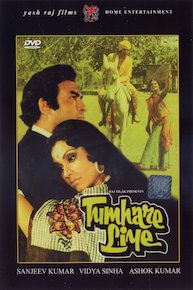
Mariss Jansons: Mahler Symphony No. 3 in D Minor
Where to Watch Mariss Jansons: Mahler Symphony No. 3 in D Minor

Mariss Jansons: Mahler Symphony No. 3 in D Minor is a compelling live concert film that captures the profound musical interpretation of Gustav Mahler's monumental Third Symphony, conducted by the renowned maestro Mariss Jansons. This film not only showcases the performance itself but also serves as an intimate exploration of the symphony's historical context, its emotive depth, and the artistic prowess of its interpreters.
Set against the backdrop of the spectacular Concertgebouw in Amsterdam, the home of the Royal Concertgebouw Orchestra, the film begins by immersing viewers in the rich soundscape that Mahler's symphony provides. As the orchestra assembles under Jansons' masterful direction, audiences are given a glimpse into the sheer magnitude of this symphonic work, widely regarded as one of the longest and most complex symphonies in the classical repertoire. The Third Symphony, written between 1893 and 1896, is evocative and grand, encompassing themes of nature, love, and existential reflection.
The film opens with a brief introduction, providing context for Mahler's life during the time when the Third Symphony was composed. Viewers learn about the composer’s unique vision, which sought to distill profound human experiences and nature’s beauty into orchestral sound. Jansons speaks about the various movements of Mahler's work, each of which presents a different emotional landscape, ranging from hauntingly serene to exuberantly joyful. This level of insight sets the stage for a deeper appreciation of the musical journey that is about to unfold.
As the performance begins, viewers are enveloped in the lush sounds of the orchestra, accompanied by the deep resonance of the contrabassoon and the high, ethereal tones of the violins. The sheer scale of the orchestra, alongside the rich choral forces and soloists, reflects the scope of Mahler's ambitions. The first movement, marked by its stark contrasts, builds up to themes that echo throughout the symphony, creating a sense of anticipation and awe. Jansons' baton dances with vigor and elegance, guiding his musicians through Mahler's intricate score, which includes everything from sweeping orchestral passages to delicate, intricate motifs.
Throughout the film, the camera captures not only the music but also the musicians' passion. Close-up shots reveal the intensity in their expressions and movements, making it clear that this is not merely a performance; it is a collective labor of love. The emotional commitment from the orchestra shines as they navigate their parts, crafting a larger tapestry of sound that is both lush and haunting.
The film skillfully includes commentary and insights from Jansons, who emphasizes the emotional core of each movement. He discusses the connections between the various sections and how they relate to human experiences—love, death, and rebirth. As the symphony progresses, viewers experience the powerful shifts in dynamics and tempo, reflecting Mahler's ability to evoke a wide spectrum of feelings, from tranquility to chaos, solitude to jubilation.
The centerpiece of the symphony, its fourth movement, features a solo mezzo-soprano, who sings a setting of Friedrich Nietzsche’s poem "Midnight Song," adding a human voice to the expansive orchestral canvas. This segment is particularly poignant, as it bridges the gap between abstract sound and lyrical expression. Jansons’ sensitivity is evident in his guidance of the soloist, nearly showcasing a delicate conversation between orchestral and vocal lines that transcends mere performance to become a spiritual dialogue.
Interspersed throughout the concert footage are comments from various musicians and analysts, contributing to an enriching narrative that frames the symphony within both personal and artistic dimensions. They reflect on Jansons’ exceptional leadership style, his attention to detail, and his ability to draw out the best in each musician, creating a cohesive sound that is lively and intricate, yet truly reflective of Mahler's vision.
As the symphony draws to a close, the film provides a sense of resolution. Audiences are left with the impression of Mahler’s belief in the ultimate triumph of love and nature over dread and despair. The final uplifting strains resonate in the concert hall, a powerful reminder of the eternal human spirit.
Mariss Jansons: Mahler Symphony No. 3 in D Minor is more than just a concert film; it's a celebration of musical craftsmanship and the emotional depths of classical music. Through its eloquent depiction of the performance and rich contextual insights, it invites both seasoned classical aficionados and newcomers alike to engage with Mahler's masterpiece in a meaningful way. It's an essential viewing experience for anyone who appreciates the transformative power of music and the dedication of artists who strive to bring great works to life.
Mariss Jansons: Mahler Symphony No. 3 in D Minor is a Art House & International movie released in 1991. It has a runtime of 103 min. Critics and viewers have rated it no reviews, with an IMDb score of 0.0..




















